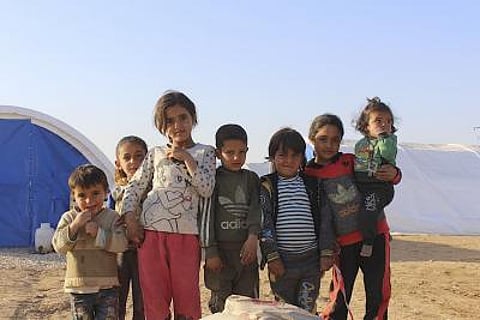1 child or youth died every 4.4 seconds in 2021: UN report. (IANS)
United Nations
UN report says 1 child died every 4.4 seconds in 2021
More than 5.0 million children under age 5, including 2.3 million newborns, along with 2.1 million children and youth aged 5 to 24 years -- 43 per cent of whom are adolescents -- died in 2021, according to a report released by the UN Inter-agency Group for Child Mortality Estimation.
"Every day, far too many parents are facing the trauma of losing their children, sometimes even before their first breath," Vidhya Ganesh, the Unicef's director of the Division of Data Analytics, Planning and Monitoring, said in a statement issued on Tuesday.
"Such widespread, preventable tragedy should never be accepted as inevitable. Progress is possible with stronger political will and targeted investment in equitable access to primary health care for every woman and child."
The report show some positive outcomes with a lower risk of death across all ages globally since 2000.
The global under-5 mortality rate fell by half since the start of the century, while mortality rates in older children and youth dropped by 36 per cent, and the stillbirth rate decreased by 35 per cent.
This can be attributed to more investments in strengthening primary health systems to benefit women, children and young people.
However, gains have reduced significantly since 2010, and 54 countries will fall short of meeting the Sustainable Development Goals target for under-5 mortality.
Unless swift action is taken to improve health services, almost 59 million children and youth will die before 2030, and nearly 16 million babies will be lost to stillbirth, warn the agencies.
Children continue to face wildly differentiating chances of survival based on where they are born, with sub-Saharan Africa and Southern Asia shouldering the heaviest burden, the reports show.
Though sub-Saharan Africa had just 29 per cent of global live births, the region accounted for 56 per cent of all under-5 deaths in 2021, and Southern Asia for 26 per cent of the total.
Children born in sub-Saharan Africa are subject to the highest risk of childhood death in the world -- 15 times higher than the risk for children in Europe and Northern America.
Mothers in these two regions also endure the painful loss of babies to stillbirth at an exceptional rate, with 77 per cent of all stillbirths in 2021 occurring in sub-Saharan Africa and South Asia. Nearly half of all stillbirths happened in sub-Saharan Africa.
The risk of a woman having a stillborn baby in sub-Saharan Africa is seven times more likely than in Europe and North America, the reports show.
Access to and availability of quality health care continues to be a matter of life or death for children globally. Most child deaths occur in the first five years, of which half are within the very first month of life.
For those youngest babies, premature birth and complications during labour are the leading causes of death.
Similarly, more than 40 per cent of stillbirths occur during labour, most of which are preventable when women have access to quality care throughout pregnancy and birth.
For children that survive past their first 28 days, infectious diseases like pneumonia, diarrhoea and malaria pose the biggest threat, according to the reports.
While Covid-19 has not directly increased childhood mortality, with children facing a lower likelihood of dying from the disease than adults, the pandemic may have increased future risks to their survival.
In particular, the reports highlight concerns around disruptions to vaccination campaigns, nutrition services, and access to primary health care, which could jeopardize their health and well-being for many years to come.
In addition, the pandemic has fuelled the largest continued backslide in vaccinations in three decades, putting the most vulnerable newborns and children at greater risk of dying from preventable diseases.
(KB/IANS)


